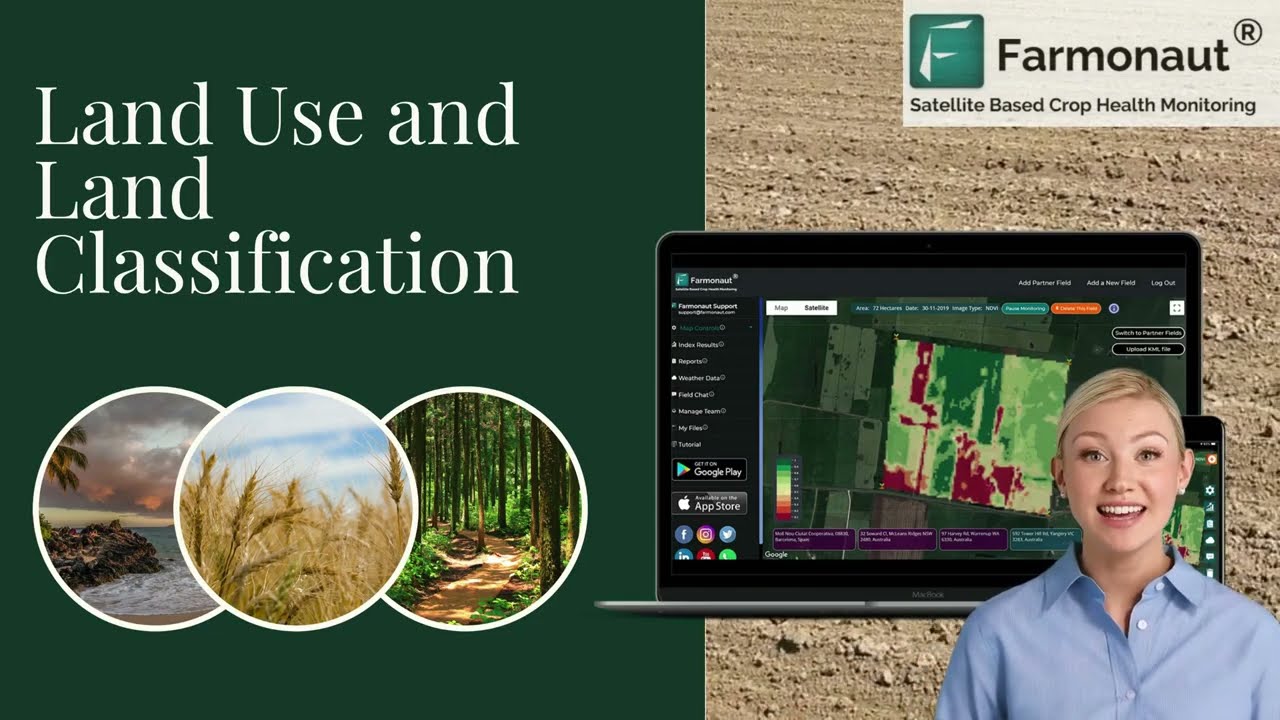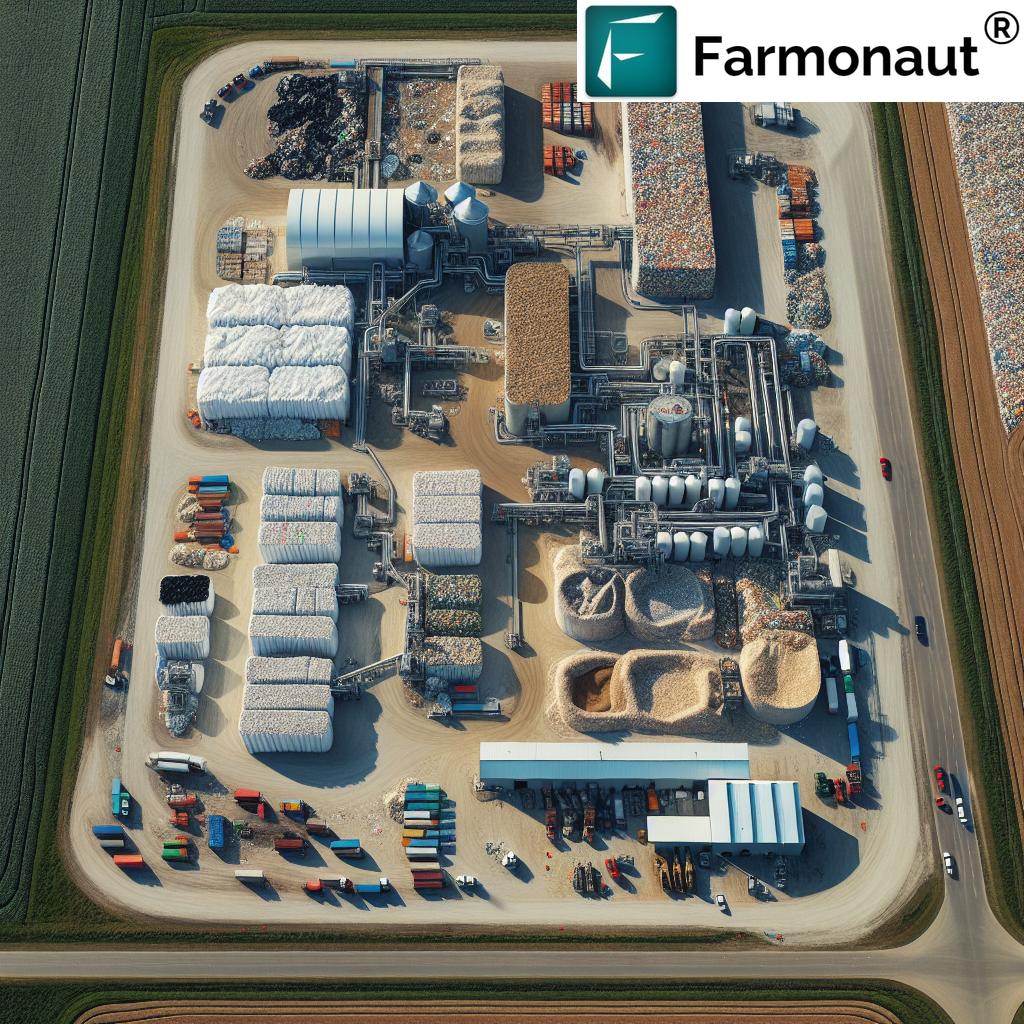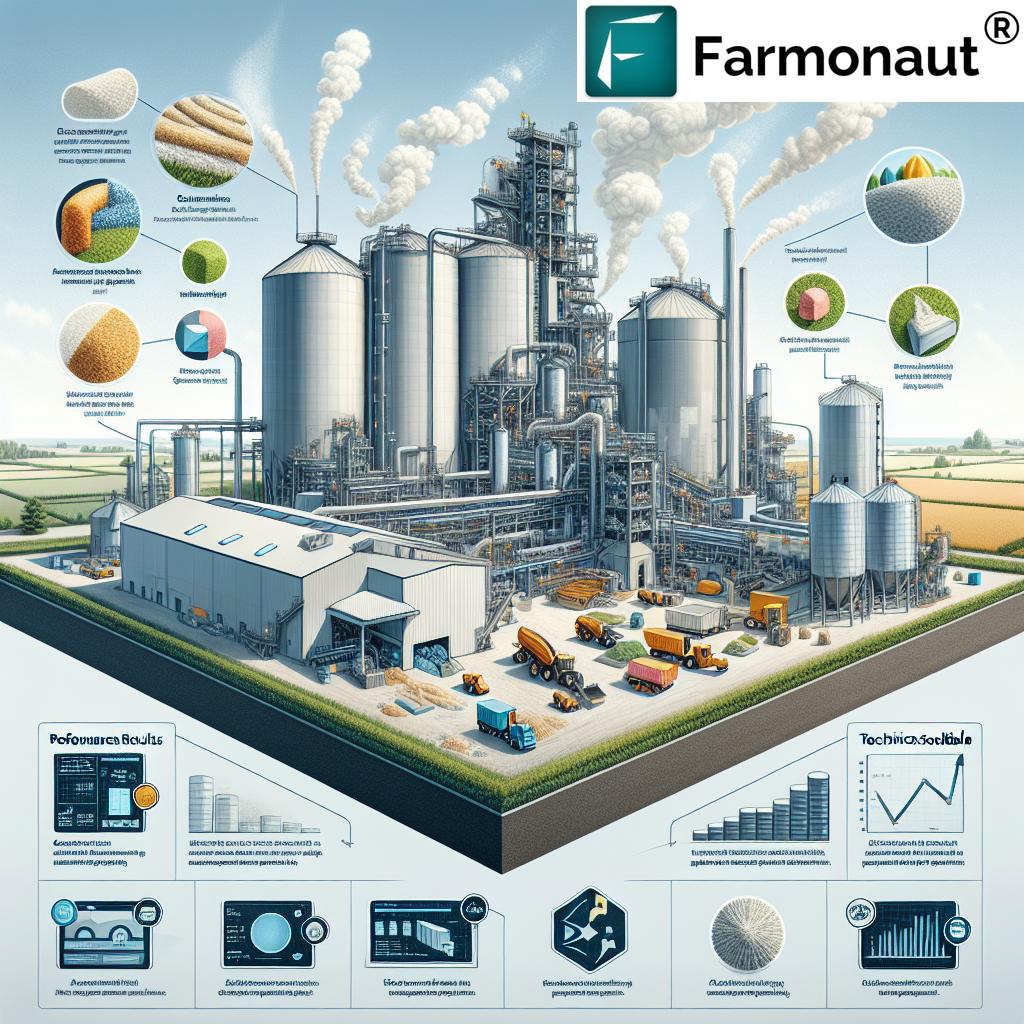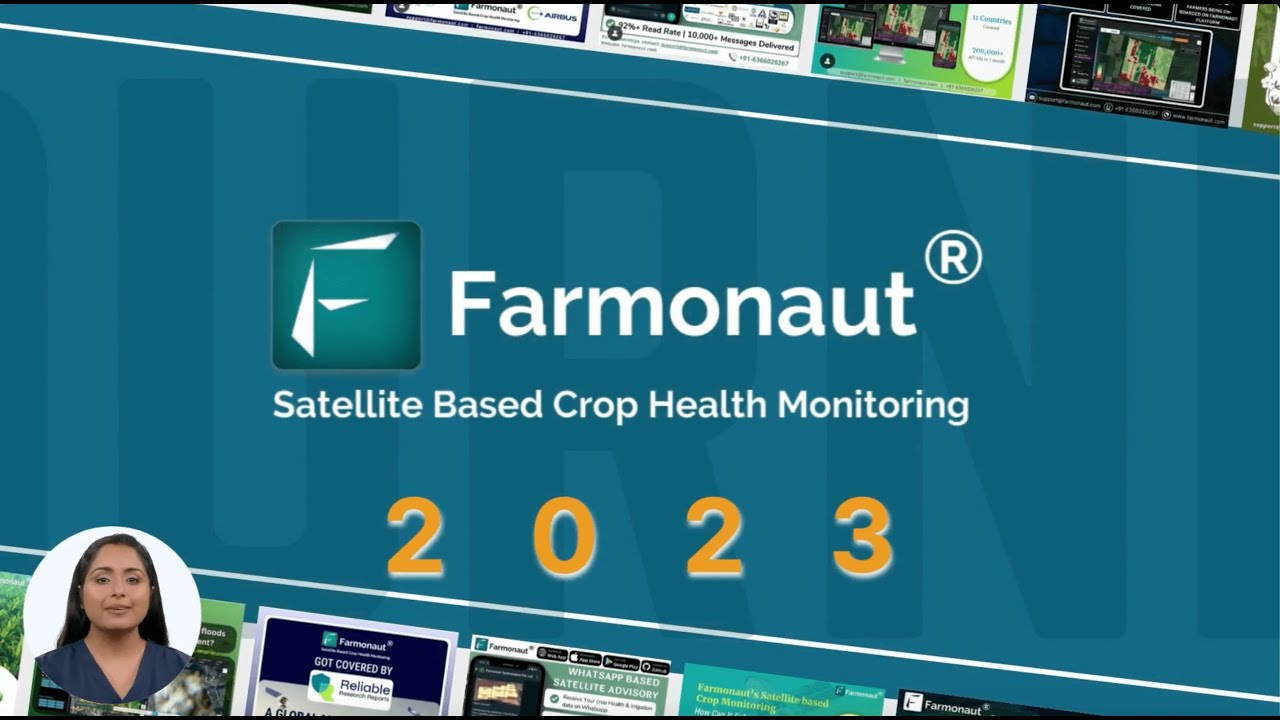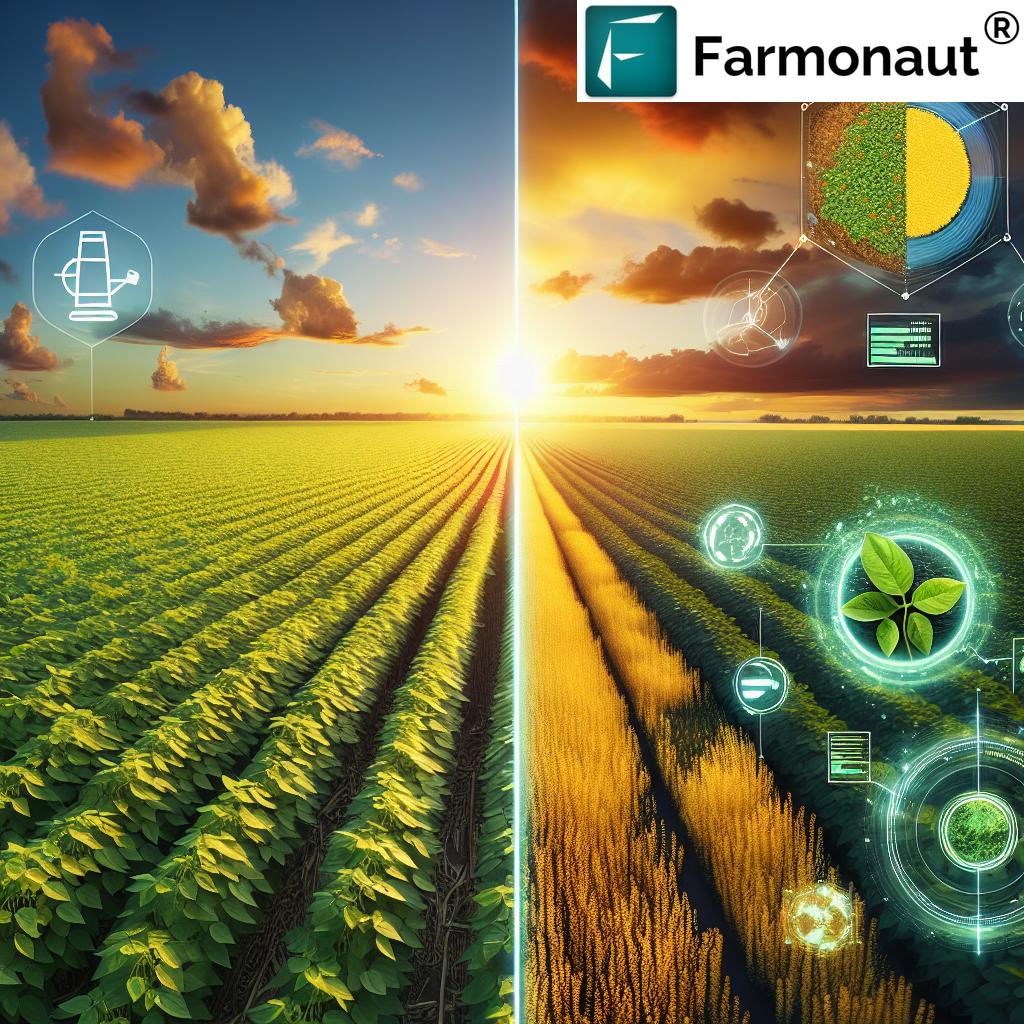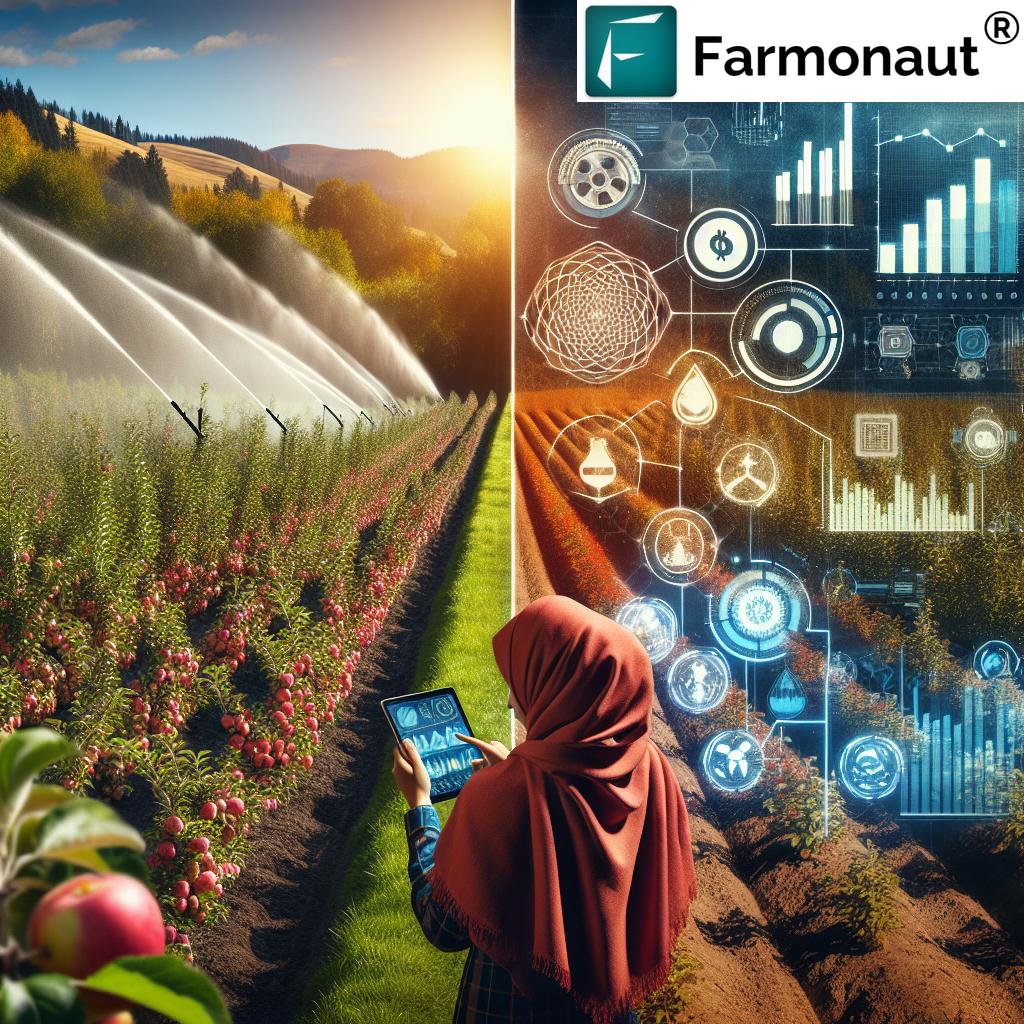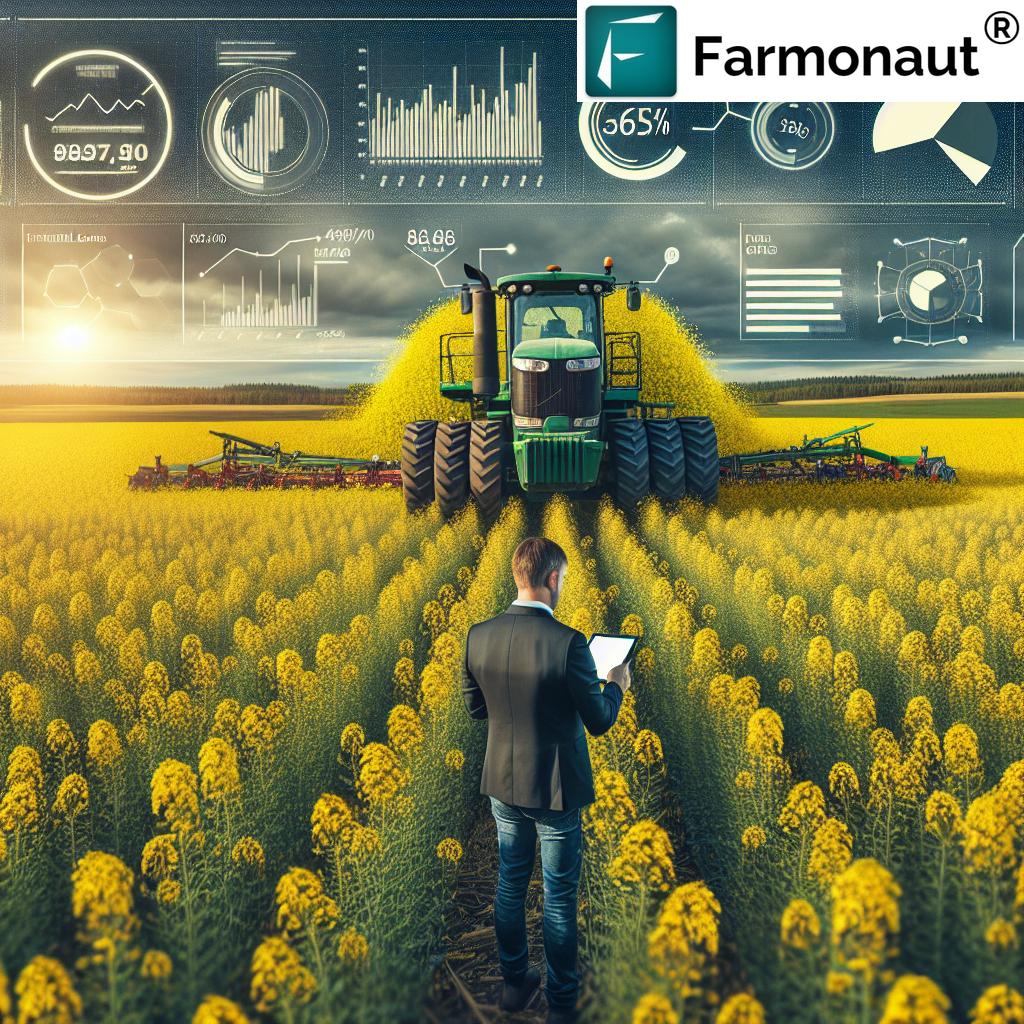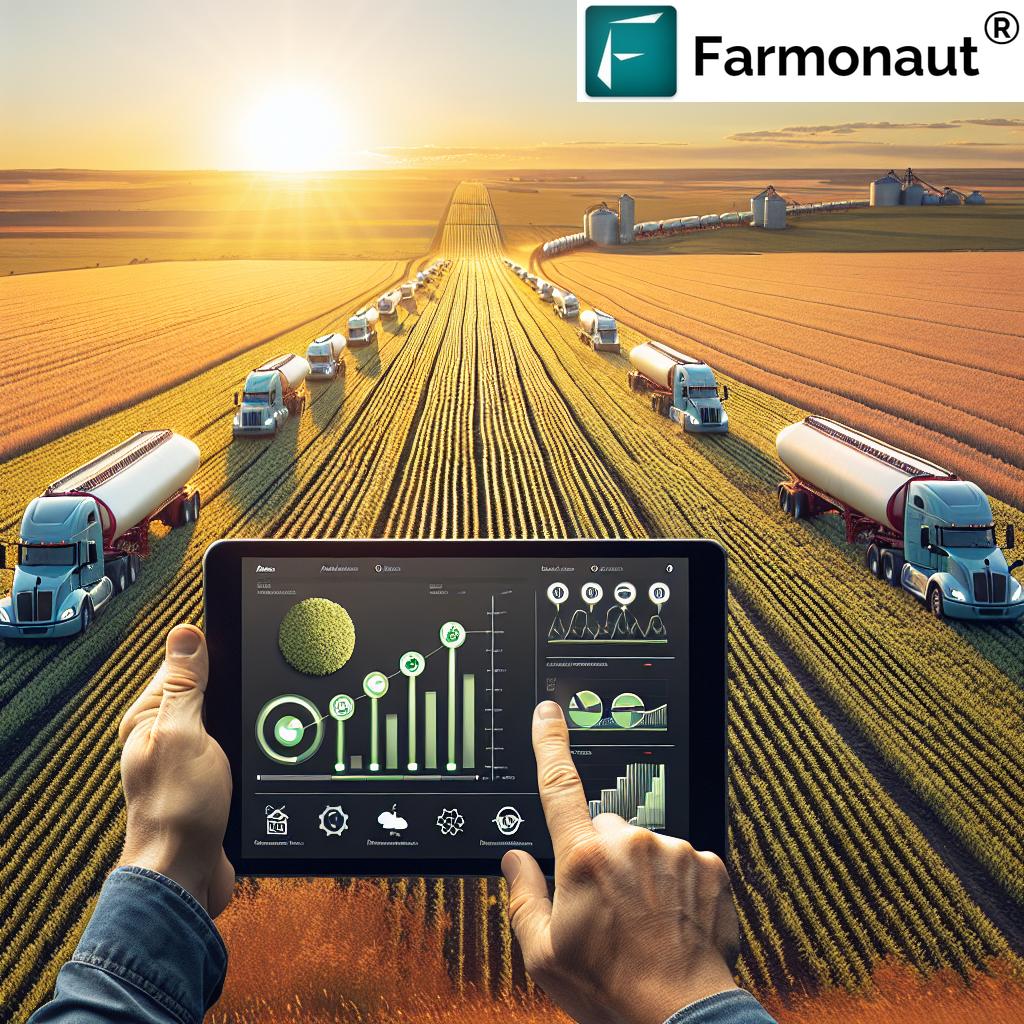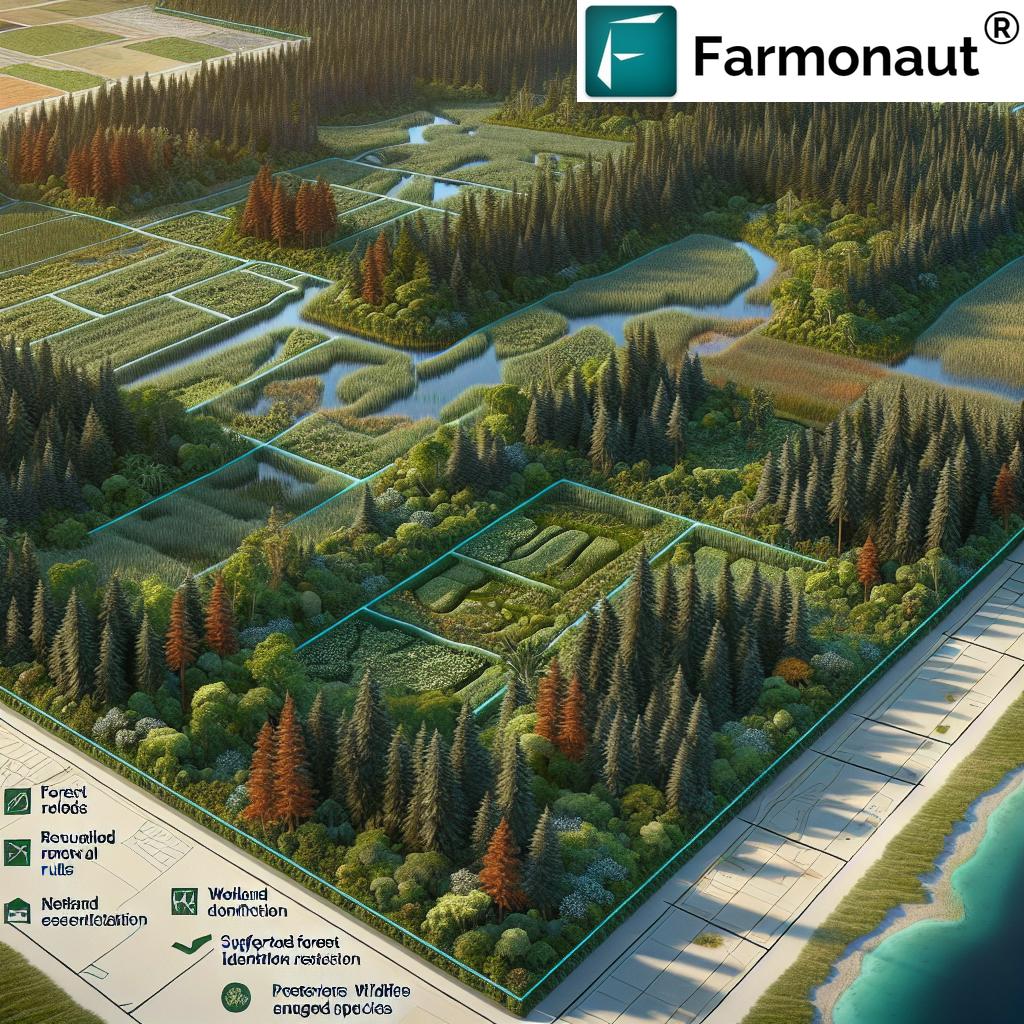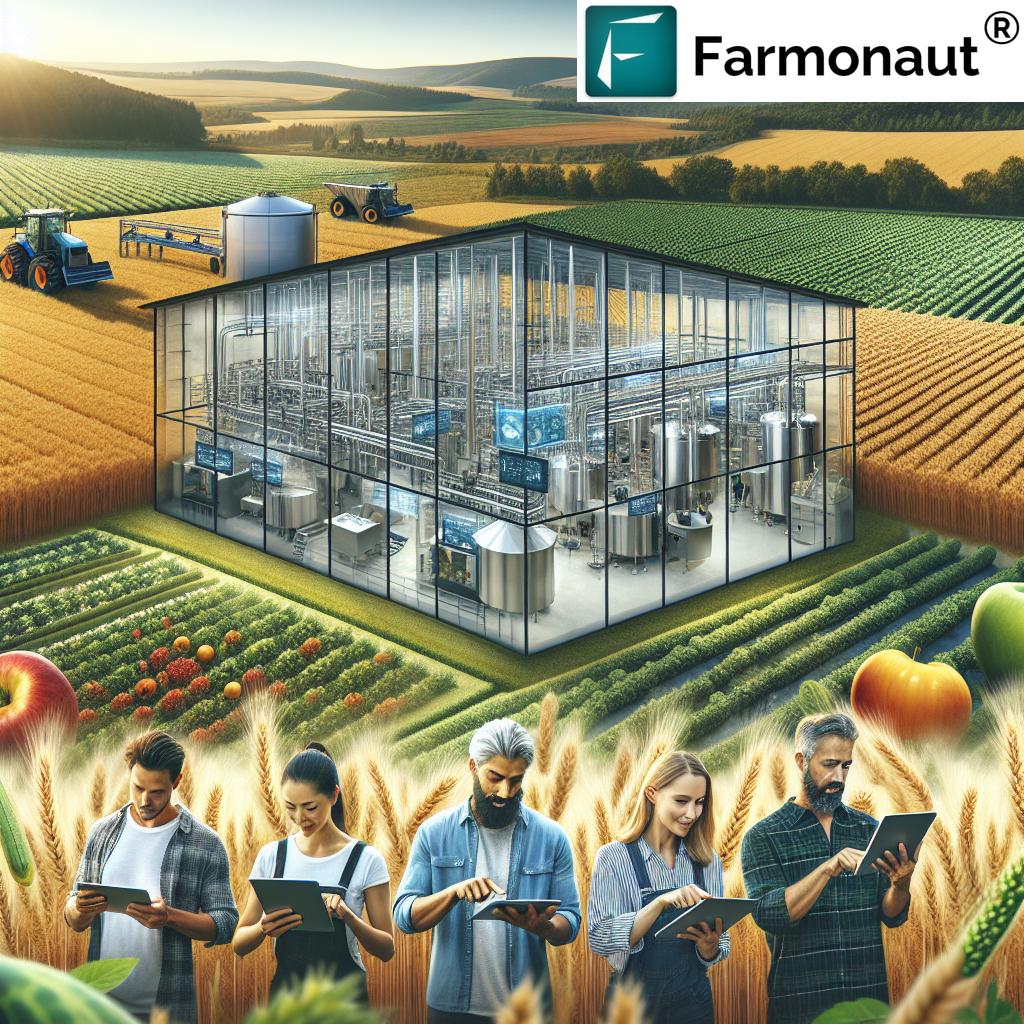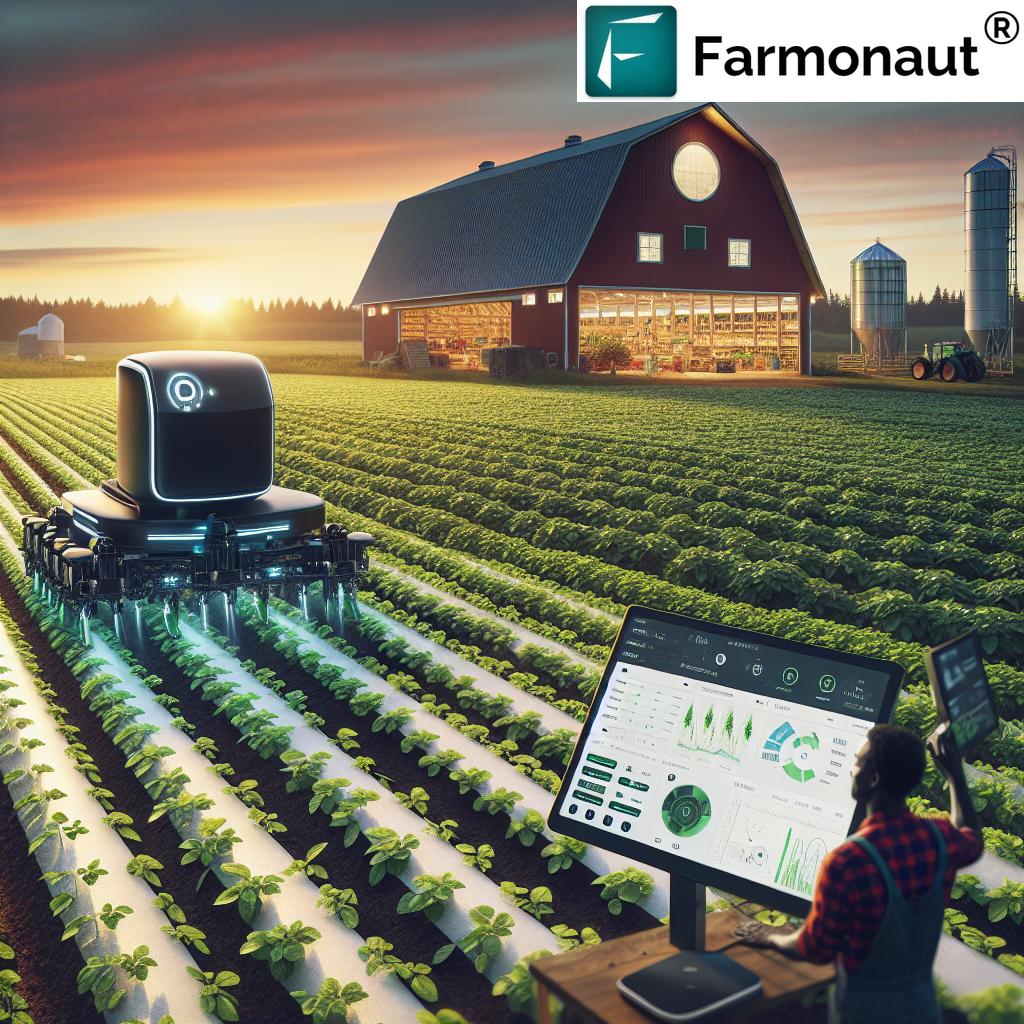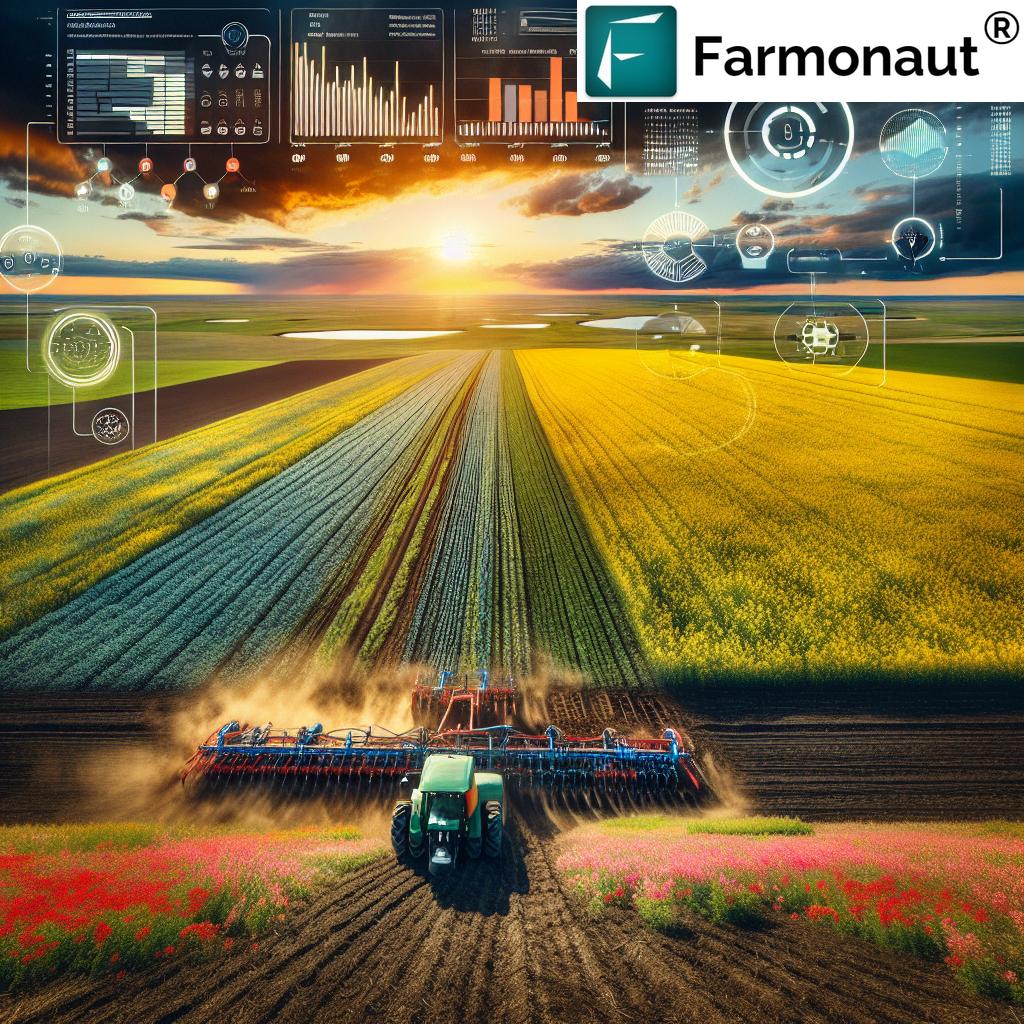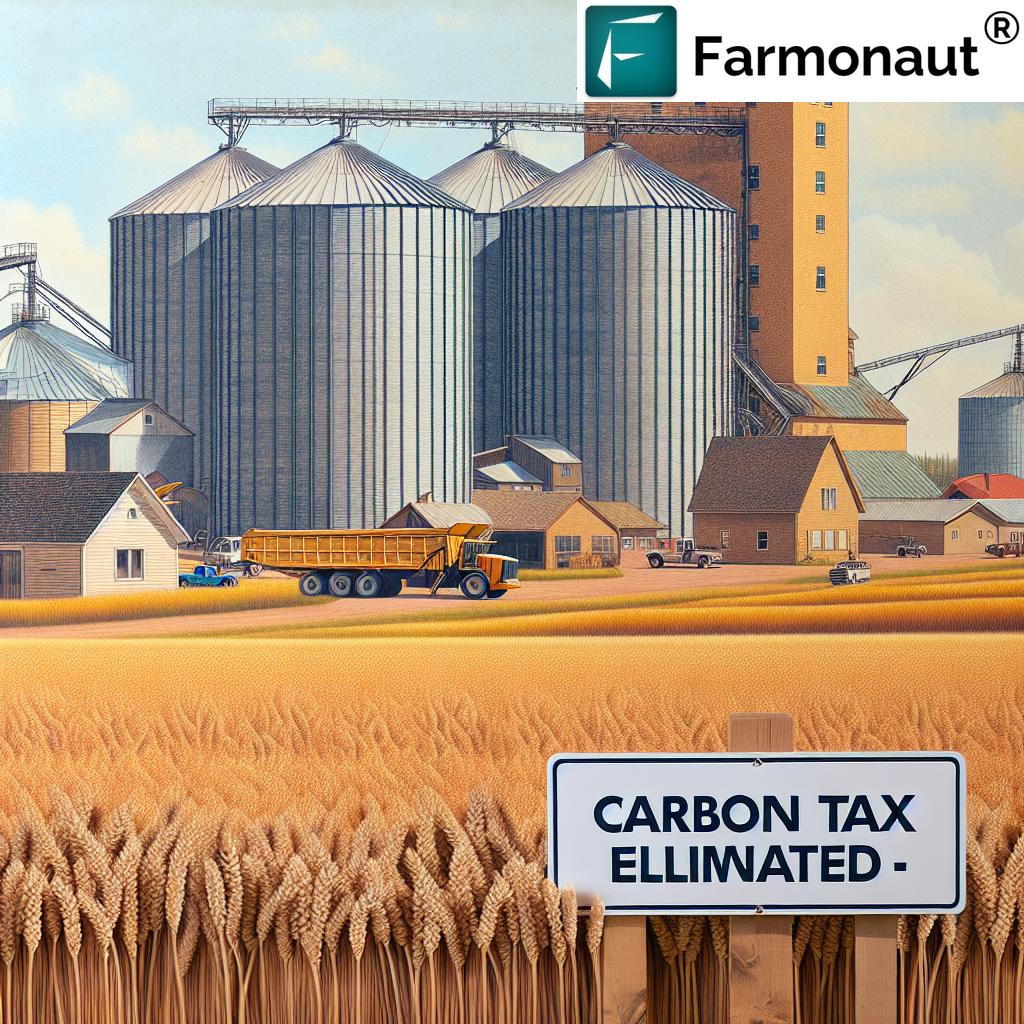Top 3 Agricultural Plastic Recycling Solutions in Canada for 2025
“Canada recycles over 5,000 tons of agricultural plastic annually, with new 2025 solutions aiming to double this volume.”
- Introduction: Driving Sustainable Agriculture With Scalable Plastic Recycling
- The Agricultural Plastics Challenge in Canada
- Comparative Summary Table: Top 3 Agricultural Plastic Recycling Solutions in Canada for 2025
- Solution #1: Aduro’s Hydrochemolytic™ Technology (HCT) – Next-Gen Chemical Recycling of Agricultural Plastics
- Solution #2: Cleanfarms National Agricultural Plastics Collection and Recycling Programs
- Solution #3: Mechanical and Advanced Agricultural Plastic Recycling across Canada
- Farmonaut: Supporting Sustainable Agriculture Through Data & Technology
- Scalable Strategies for the Circular Economy in Canadian Agriculture
- Future Opportunities and Risks in Agricultural Plastic Waste Management
- FAQ: Agricultural Plastic Recycling in Canada
- Conclusion: Building a Greener, Cleaner Future for Canadian Farms
Introduction: Driving Sustainable Agriculture With Scalable Plastic Recycling
As Canada’s agricultural sector rapidly modernizes, helping to feed the world into the 21st century, we face pressing challenges in agricultural plastic waste management. Modern farming relies on plastics—whether it’s silage film, bale wrap, grain bags, netting, or twine—to optimize yields and protect resources. Yet, these same critical materials become a mounting liability at the end of their useful lives.
Each year, the Canadian agriculture sector generates an estimated 62,000 tonnes of agricultural plastics. A large proportion of this waste ends up landfilled, burned, or stockpiled, despite their embedded value and potential fit in the circular economy in agriculture. As we move into 2025, new technologies, waste management solutions, and responsible farming frameworks are transforming how we handle, process, and recycle on-farm plastics for a more sustainable future.
This comprehensive guide explores the top 3 agricultural plastic recycling solutions in Canada for 2025, examining their impact, technology, scalability, sustainability, and how they support circularity in the farming sector. We’ll analyze chemical recycling of farm plastics, advanced collection programs, and mechanical recycling approaches—demonstrating the newfound viability for these difficult, contaminated streams. Along the way, you’ll discover how tools like Farmonaut’s precision agriculture and carbon footprint tracking are shaping the future of sustainable farming.
The Agricultural Plastics Challenge in Canada
Why Are Agricultural Plastics Difficult to Recycle?
- Contamination: Silage film, bale wrap, grain bags, and netting often contain high levels of soil, organic matter, and moisture, making separation and cleaning costly and complex.
- Mixed Feedstocks: On-farm plastic waste includes multiple polymer types (polyethylene, polypropylene, etc.), which challenge conventional systems designed for clean, single-stream plastics.
- Geographic and Logistical Barriers: Canadian farms are spread over vast land areas, complicating collection, aggregation, and transportation logistics.
- Lack of End-Markets for Contaminated Plastics: Recyclers require clean inputs for most mechanical processes. Most contaminated plastics are incinerated, stockpiled, or sent to landfill.
Understanding these challenges makes it clear that scalable, technically advanced, and economically viable solutions must support the circular economy in agriculture—maximizing resource recovery and reducing environmental impacts on a national scale.
“Three leading Canadian technologies process up to 90% of collected farm plastics, advancing the nation’s circular economy goals.”
Comparative Summary Table: Top 3 Agricultural Plastic Recycling Solutions in Canada for 2025
| Solution Name | Technology Type | Estimated Annual Handling Capacity (Tons) | Estimated Recycling Efficiency (%) | Implementation Scale (Pilot/Commercial) | Environmental Impact (CO₂ Reduction, Tons/Year) | Key Circular Economy Benefit |
|---|---|---|---|---|---|---|
| Aduro Hydrochemolytic™ Technology (HCT) | Hydrochemolytic™ water-based chemical recycling | Up to 20,000 | 70–90 | Pilot/Demonstration | 10,000–15,000* | Conversion of mixed, contaminated plastics into reusable hydrocarbons (resource recovery & closed loop) |
| Cleanfarms National Collection Programs | Centralized collection and logistics, mechanical preparation, extended producer responsibility (EPR) frameworks | 35,000+ | 50–75 | Commercial, National | 15,000–25,000* | Aggregation of plastics for regional/national recycling; broad stewardship and reduced landfilling |
| Mechanical & Advanced Regional Recycling Solutions | Mechanical reprocessing, advanced sorting, contamination separation | 10,000+ | 60–85* | Regional/Commercial | 7,000–10,000* | Local reuse, regranulate and product manufacturing (woven bags, pipes, farm products) |
*Estimated values, actual environmental impact depends on local energy mix, feedstock volumes, and product yield.
Solution #1: Aduro’s Hydrochemolytic™ Technology (HCT) – Next-Gen Chemical Recycling of Agricultural Plastics
Aduro’s Hydrochemolytic™ Technology (HCT) stands as a potential breakthrough in chemical recycling of farm plastics—especially contaminated, mixed-polymer waste streams that defeat mechanical or conventional processes. This innovative water-based chemistry platform utilizes the power of low-temperature, hydrochemolytic reactions to break down agricultural plastics into valuable hydrocarbon products (fuels, oils, and chemical feedstocks).
How HCT Addresses Agricultural Plastic Recycling Challenges
- High Contaminant Tolerance: Unlike mechanical recyclers, HCT operates effectively on plastics with significant levels of soil, organic material, and moisture—reducing labor-intensive pre-cleaning.
- Mixed-Polymer Capabilities: Handles a variety of feedstocks (silage film, bale wrap, grain bags, netting, twine) in the same stream, eliminating the need for extensive material separation.
- Low Temperature, Water-Based Process: Leverages water as a key reaction agent, minimizing energy consumption and reducing carbon footprint compared to traditional pyrolysis or incineration.
- Commercial Scalability: Designed for continuous flow, modular architecture suitable for regional “demonstration plants” and ultimate national rollout.
- Product Output Value: Converts low-value, problematic ag-plastics into reusable hydrocarbons, creating new revenue streams and offsetting raw material demand in Canada and beyond.
The Hydrochemolytic™ Technology’s development and scale-up are organized into binding and non-binding phases:
- Phase A: Laboratory Feasibility Trials – Testing real-world samples (silage film, bale wrap, etc.) to evaluate contamination tolerance, preprocessing needs, and conversion efficiency.
- Phase B: Scale-Up and Process Modeling – Continuous processing of large, field-grade volumes to assess system stability, operational feasibility, and economics.
- Phase C: Demonstration Plant Integration – Potential inclusion of agricultural plastics in pilot-plant feedstock, validating continuous operation and informing commercial deployment strategies.
This approach is engineered to support the national agricultural plastics collection programs run by extended producer responsibility (EPR) organizations, positioning Canada as a global reference for circular economy in agriculture.
Potential Impact:
- Reduces landfilling of non-mechanically recyclable farm plastics by enabling a commercial recycling pathway.
- Supports national and provincial waste diversion targets and helps the agricultural sector achieve lower carbon emissions.
- Creates value from previously overlooked feedstocks by returning important resources (hydrocarbon products) to the supply chain.
Solution #2: Cleanfarms National Agricultural Plastics Collection and Recycling Programs
Cleanfarms operates as Canada’s premier producer responsibility organization (PRO) for agricultural waste management solutions. Through extended producer responsibility (EPR) frameworks in Ontario, Quebec, Alberta, Saskatchewan, and beyond, Cleanfarms organizes and manages an extensive national supply chain for plastic waste—including more than 2,000 collection sites and 200+ member companies.
Core Components of Cleanfarms’ Approach
- Broad Producer Responsibility in the Farming Sector: Ensures brand owners participate in funding collection, transport, and processing of packaging and plastics generated from their products.
- Farmer Engagement and Logistics: National network of collection points provides convenient drop-off and aggregation, greatly increasing recovery rates for high-volume items (e.g., fertilizer and pesticide jugs, bale wrap, grain bags).
- Programmatic Compliance: Delivers compliance for regulated stewardship programs and provides detailed data on recovery performance, supporting sector-wide improvement.
- Scalable Solutions: Expanding pilots, field trials, and partnerships to address plastics lacking markets (e.g., contaminated silage films, certain netting types).
Achievements to Date:
- In 2023, Cleanfarms achieved an 87% recovery rate for pesticide and fertilizer containers under 23 litres—demonstrating the potential of well-designed recovery and recycling programs.
- Continuing to innovate with new streams, including partnerships to evaluate chemical recycling options for hard-to-recycle plastics, leveraging Canada’s growing demonstration plant infrastructure.
- Supporting the broader development of circular economy in agriculture by integrating logistics, data, and program metrics across the country.
This comprehensive service reduces the environmental impact of farm plastics by maximizing collection, ensuring safe cyclone handling, and preparing plastics for regional and national recycling partners.
Solution #3: Mechanical and Advanced Agricultural Plastic Recycling across Canada
While chemical recycling of farm plastics opens new pathways, regional mechanical recycling remains crucial for more straightforward, less-contaminated on-farm waste streams. These technologies complement national programs and chemical innovations, targeting higher-purity plastics and supporting on-shore manufacturing.
Key Features of Mechanical and Advanced Recycling Approaches
- Regional Sorting & Shredding Facilities: Specialize in preprocessing baled plastics (wrap, film, netting) into clean granulate, chips, or pellets.
- Contaminant Separation Technologies: Employ advanced washing, thermal drying, and even AI-powered sorting to uplift feedstock purity for high-quality products.
- Product Manufacturing: Outputs are reprocessed into new agricultural products (field drain pipe, fencing, bags) or input as secondary feedstock for higher-level recycling (chemical reprocessors).
- Pilot & Commercial Models: Many plants operate at regional scale (10,000+ tons/year), with successes in Saskatchewan, Ontario, and Quebec.
These programs face technical and economic challenges—particularly with heavily contaminated farm plastics—but are critical for maximizing resource efficiency and progressing the circular economy in agriculture.
Did you know? Developers, researchers, and agribusinesses can leverage Farmonaut’s industry-leading satellite API for real-time farm monitoring, weather insights, and fleet logistics. Get started with the Farmonaut Satellite API or explore our detailed API Developer Docs.
Farmonaut: Supporting Sustainable Agriculture Through Data & Technology
Farmonaut is an agricultural technology company at the forefront of making precision agriculture affordable and accessible, thereby supporting sustainable, data-driven farming globally. Through advanced analytics and actionable intelligence, we enable Canadian farmers and agribusinesses to optimize their practices, reduce environmental impact, and track critical sustainability metrics—complementing the best in agricultural waste management solutions.
- Satellite-Based Crop Health Monitoring: Multispectral imagery empowers users to assess crop health, soil moisture levels, and resource allocation, directly supporting sustainability and minimization of waste.
- AI-Driven Farm Advisory: With our Jeevn AI system, farmers receive real-time, personalized recommendations—improving yields while reducing input costs and environmental burden.
- Blockchain Based Supply Chain Traceability: Our platform’s robust blockchain solution (see Product Traceability) guarantees product journey transparency, which is crucial in verifying the use of recycled agricultural plastics and maintaining consumer trust.
- Fleet and Resource Management: Tools for efficient fleet management (Fleet Management) and resource use ensure sustainable logistics and operating efficiency across farm holdings and supply chains.
- Carbon Footprinting: With our Carbon Footprinting module, agribusinesses can measure real-time emissions, take corrective action, and better align with national environmental goals and circular economy principles.
- Support for Crop Loans and Insurance: We make access to financial services easier for Canadian farmers (Crop Loan & Insurance) through satellite verification, reducing risk for banks and speeding up support for producers seeking to invest in modern, sustainable technology.
- Large Scale and Cooperative Farm Management: Manage cooperative operations, plantation, and track forest carbon with the Agro Admin App.
Whether you farm in Ontario or Quebec, operate a commercial agribusiness, or help build national collection frameworks, Farmonaut’s technology stack can advance your sustainability goals and accountability—driving more effective agricultural plastic recycling solutions as part of a broader, integrated risk management strategy.
Scalable Strategies for the Circular Economy in Canadian Agriculture
To truly succeed in the circular economy in agriculture, we must blend scalable plastic waste solutions, technical innovation, and robust stakeholder engagement. Here’s how Canada is leading:
1. Connecting Collection to Advanced Processing
- Expanded Collection Programs: National and regional EPR frameworks give producers both responsibility and incentives to ensure all major farm plastic streams are recovered.
- Integration with Demonstration and Commercial-Scale Plants: By aggregating sufficient feedstock and managing contamination through preprocessing, the Canadian sector maximizes operational stability for advanced chemical and mechanical plants.
2. Embracing New, Market-Oriented Recycling Technologies
- Hydrochemolytic™ and Advanced Chemical Recycling: By focusing R&D and investment on new water-based or modular platforms, we create sustainable, commercially viable outlets even for the most contaminated plastic waste streams.
- High-Purity Mechanical and Hybrid Systems: With contamination-tolerant sorters and preprocessing, traditional recyclers can capture more value from secondary markets and feed downstream chemical processors.
3. Supporting Policy, Economics, and Ecosystem Development
- Broader Regulatory Alignment: Extending producer responsibility frameworks and reporting standards ensures accountability and higher sector-wide diversion rates.
- Techno-Economic and Environmental Models: Ongoing evaluation of yield, cost, and emissions performance supports agile program evolution and helps unlock provincial or federal funding for broader deployment.
4. Promoting Market Demand and Resource Reuse
- Closing the Loop: Farm plastics regain purpose as new products—replacing virgin resin, generating hydrocarbon feedstock, or serving soil and water management on the farm.
- Farmer and Stakeholder Education: Scaling successful outcomes depends on awareness campaigns, practical program design, and clear demonstration of both environmental and economic value.
Future Opportunities and Risks in Agricultural Plastic Waste Management
While agricultural plastic recycling solutions are surging ahead, significant risks and uncertainties accompany scale-up and long-term deployment:
- Feedstock Variability and Contamination: Real-world farm plastics display high contamination and variable composition, challenging technical systems and preprocessing strategies.
- Supply Chain Logistics: The vast Canadian landscape poses collection, aggregation, and transportation obstacles that can impact feasibility and cost.
- Economic Viability: The financial attractiveness of advanced recycling processes will fluctuate with processing costs, market price for recovered materials, and policy incentives.
- Regulatory Adjustments: Shifting provincial or federal frameworks, or producer responsibility mandates, can affect compliance and funding.
- Market Demand for Recycled Products: Recycling efficiency and environmental impact are ultimately determined by downstream demand and the acceptance of recycled hydrocarbon or mechanical products.
Proactive evaluation, pilot testing, continuous data collection, and technical adaptation are critical for successful outcomes. The sector’s commitment to robust program development and technical validation will ensure Canada remains a global leader in environmental agricultural plastics management for the future.
FAQ: Agricultural Plastic Recycling in Canada
-
What plastics are collected and recycled from Canadian farms?
Typical streams include silage film, bale wrap, grain bags, netting, twine, and fertilizer/pesticide containers. Contamination level and polymer type determine suitability for mechanical or chemical recycling.
-
How efficient are Canadian agricultural plastic recycling solutions?
Mechanical systems can handle 50–85% of select streams if contamination is low; advanced chemical systems (like Aduro’s HCT) are designed for 70–90% conversion efficiency on more challenging feedstocks.
-
What is “producer responsibility”?
Under Extended Producer Responsibility frameworks, manufacturers and suppliers are required to fund and organize collection, transportation, and responsible disposal or recycling of farm plastics and related products.
-
Can farmers benefit financially from participating?
Yes, farmers may save on disposal costs, avoid environmental liabilities, and in some pilot areas, receive compensation or credits for sorted, collected plastic. Higher participation also increases program performance nationwide.
-
What role do advanced digital platforms play?
Technologies like Farmonaut’s crop monitoring, resource management, and carbon tracking enable farmers and agribusiness to optimize inputs, verify compliance, measure sustainability progress, and even facilitate traceable recycled content claims.
Conclusion: Building a Greener, Cleaner Future for Canadian Farms
As we approach 2025, Canada’s agricultural sector sits at the forefront of the global push for sustainable plastics management—combining innovative chemical recycling, advanced collection and sorting networks, and mechanical reprocessing to achieve real circular outcomes. By connecting responsible producers, modern technology, and strong stewardship frameworks, we reduce landfilling, unlock new resource value, and ensure environmental stewardship remains a core element of modern farming.
With powerful platforms like Farmonaut enhancing farm intelligence, carbon reporting, and resource transparency—Canadian farmers, organizations, and consumers can confidently support the next generation of agricultural plastic recycling solutions.
Learn more about Farmonaut’s commitment to sustainability and how our technology empowers stakeholders across the agriculture value chain: farmonaut.com
Ready to embrace the future of sustainable farming? Access advanced digital tools for resource optimization, compliance, and impact measurement—explore the Farmonaut platform today.


